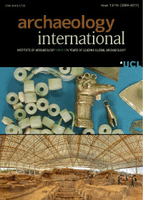
Archaeology International
Scope & Guideline
Exploring the past to illuminate the future of archaeology.
Introduction
Aims and Scopes
- Interdisciplinary Approaches in Archaeology:
The journal encourages the integration of various disciplines, including anthropology, history, and environmental science, to provide a holistic understanding of archaeological findings. - Cultural Heritage and Conservation:
A significant focus on the preservation and interpretation of cultural heritage, emphasizing the role of archaeology in informing heritage management practices. - Fieldwork and Excavation Reports:
Publication of detailed accounts of archaeological fieldwork, showcasing new findings and methodologies applied in various excavation projects. - Public Engagement and Education:
Highlighting initiatives that promote public interest in archaeology, including educational programs, community involvement, and outreach activities. - Critical Reflections on Archaeological Practices:
Encouraging discussions that challenge traditional archaeological narratives and methodologies, fostering a critical and reflexive approach to the discipline.
Trending and Emerging
- Community-Based Archaeology:
There is a rising interest in projects that involve local communities in archaeological research, emphasizing collaboration and the co-creation of knowledge. - Environmental Archaeology:
A growing trend towards understanding past human-environment interactions, with studies focusing on climate change, sustainable practices, and ecological impacts of ancient societies. - Digital Archaeology and Technology:
The incorporation of digital tools and technologies in archaeological research, including GIS, 3D modeling, and remote sensing, is increasingly prevalent in recent publications. - Social and Political Dimensions of Archaeology:
Emerging themes that explore the social implications of archaeological findings, including issues of identity, power dynamics, and the politics of heritage. - Reflections on Archaeological Ethics:
A notable increase in discussions surrounding ethical considerations in archaeology, including repatriation, cultural sensitivity, and the responsibilities of archaeologists to both communities and the academic field.
Declining or Waning
- Traditional Artifact Studies:
There appears to be a noticeable reduction in articles focused solely on the analysis of specific artifact types without broader contextualization or interdisciplinary approaches. - Purely Historical Narratives:
Papers that focus on straightforward historical accounts or narratives without integrating archaeological data or contemporary relevance have become less frequent. - Regional Studies with Limited Scope:
Research focusing exclusively on narrow geographic regions without comparative or global perspectives seems to be declining, as the journal shifts towards broader, more integrative studies.
Similar Journals

African Archaeological Review
Advancing Knowledge of Africa's PastWelcome to the African Archaeological Review, a leading academic journal published by Springer, dedicated to advancing the field of archaeology with a unique focus on the African continent. Since its inception in 1983, this journal has become a pivotal platform for researchers, professionals, and students seeking to explore the complexities of African cultural heritage through empirical studies, theoretical discussions, and methodological innovations. With a commendable Q1 ranking in both Archaeology (Arts and Humanities) and Archaeology categories for 2023, this journal ranks among the top 10% of publications in its field, reflecting its influential contributions to archaeological scholarship. The Scopus ranking places it at #40 out of 413 in Arts and Humanities and #39 out of 354 in Social Sciences, highlighting its esteemed status within academic circles. Although it does not currently offer Open Access options, the journal remains committed to disseminating vital research findings that shape our understanding of Africa's rich archaeological landscape. Join a community dedicated to unraveling past human behaviors and interactions within diverse African environments through the pages of the African Archaeological Review.
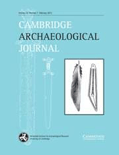
CAMBRIDGE ARCHAEOLOGICAL JOURNAL
Illuminating the Past, Inspiring the FutureThe Cambridge Archaeological Journal, published by Cambridge University Press, is a premier academic journal dedicated to archaeology and cultural studies. With an ISSN of 0959-7743 and an E-ISSN of 1474-0540, it has established itself as a leading platform since its inception in 1991, showcasing groundbreaking research that significantly contributes to our understanding of human history and cultural heritage. The journal currently ranks in the top quartile (Q1) across various categories, including Archaeology and Cultural Studies, underlining its impact and relevance in the field. The impact factor reflects its esteemed position, with Scopus ranks placing it within the 90th to 93rd percentiles among its peers. Researchers, professionals, and students alike benefit from its insightful analyses and interdisciplinary approaches, making it an essential resource for advancing knowledge in archaeology and related fields. The journal is based in the United Kingdom, at the Edinburgh Building, Shaftesbury Rd, CB2 8RU, Cambridge, England, and continues to drive scholarly conversations through its commitment to excellence and innovation in archaeological studies.
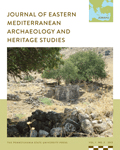
Journal of Eastern Mediterranean Archaeology and Heritage Studies
Uncovering the Past, Preserving the FutureJournal of Eastern Mediterranean Archaeology and Heritage Studies, published by Penn State University Press, is a premier academic journal dedicated to the exploration and understanding of the archaeological and heritage landscapes of the Eastern Mediterranean region. With an ISSN of 2166-3548 and an E-ISSN of 2166-3556, this journal serves as an essential resource for researchers, professionals, and students in the fields of archaeology, conservation, and heritage studies. Its notable impact is reflected through its Q2 category rankings in both Archaeology and Conservation, coupled with commendable Scopus rankings, positioning it within the top quartiles of its disciplines. The journal not only fosters scholarly dialogue by publishing cutting-edge research but also aims to bridge the gap between academic inquiry and practical conservation efforts. As the field continues to evolve, this journal provides a vital forum for disseminating knowledge and advancing the preservation of cultural heritage, making it indispensable for all engaged in the study of the Eastern Mediterranean’s rich archaeological heritage.

Levant
Charting Historical Narratives Through Rigorous InquiryLevant is a prestigious academic journal published by Routledge Journals, Taylor & Francis Ltd, focusing on the fields of Archaeology and History. Since its inception in 1969, the journal has become a vital platform for researchers, professionals, and students interested in Middle Eastern studies, presenting high-quality research that reflects the rich cultural and historical tapestry of the Levant region. With an impressive impact factor and classified as Q1 in both Archaeology and History, Levant showcases innovative scholarship that pushes the boundaries of knowledge while maintaining rigorous academic standards. Although it is not an open-access journal, its articles are widely accessible through libraries and academic institutions, ensuring a broad reach for its impactful publications. With ongoing research converging from 1969 through to 2024, Levant remains a cornerstone for advancing academic discourse and exploration in relevant historical narratives.

Virtual Archaeology Review
Exploring New Frontiers in Archaeology and Conservation.Virtual Archaeology Review, published by UNIV POLITECNICA VALENCIA, EDITORIAL UPV, is a distinguished open-access journal dedicated to the dynamic fields of archaeology and conservation. Based in Spain, this journal has made a significant impact in the academic community, reflected in its outstanding Q1 ranking in Archeology and Conservation for 2023, alongside impressive standings in related disciplines such as Computer Science Applications. With an active commitment to promoting the accessibility of knowledge since 2010, it provides a platform for researchers, professionals, and students to share innovative findings and methodologies in virtual archaeology, fostering collaboration across disciplines. The journal's impact factor and its strategic focus on advancing the practice of virtual methodologies in archaeology underscore its vital role in bridging technology and heritage studies. By embracing a multidisciplinary approach, Virtual Archaeology Review not only enhances academic discourse but also drives the development of effective conservation strategies, making it an essential resource for those dedicated to the preservation and appreciation of our cultural heritage.
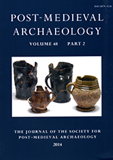
Post-Medieval Archaeology
Exploring the Intersection of History and ArchaeologyPost-Medieval Archaeology is a distinguished academic journal published by ROUTLEDGE JOURNALS, TAYLOR & FRANCIS LTD, focusing on the rich tapestry of human history from the post-medieval period through the lens of archaeology. With a proud publication history spanning since 1967, this journal addresses the integration of archaeological findings with historical narratives, contributing significantly to the field of archaeology and history. The journal holds an impressive categorization within the Q2 and Q3 quartiles for Archaeology and History in 2023, showcasing its commitment to academic excellence and relevance within these disciplines. Researchers and professionals alike will find value in its critical examinations and innovative methodologies that illuminate the past, making it a pivotal resource for those engaged in archaeological research. As an essential platform for scholarly debate and dissemination, Post-Medieval Archaeology continues to advance the understanding of post-medieval contexts and material culture, fostering discussions that resonate through various areas of the arts, humanities, and social sciences.
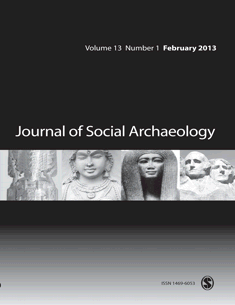
JOURNAL OF SOCIAL ARCHAEOLOGY
Challenging Narratives, Enriching PerspectivesJOURNAL OF SOCIAL ARCHAEOLOGY, published by SAGE Publications Ltd, stands at the forefront of interdisciplinary research where archaeology meets social science. With an ISSN of 1469-6053 and an E-ISSN of 1741-2951, this esteemed journal provides a platform for investigation into the social dimensions of past human behaviors and interactions. Since its inception in 2001, it has garnered substantial recognition, currently ranked in the Q1 quartile in both Archaeology and Arts and Humanities (miscellaneous) categories for 2023, positioning it among the top-tier journals within these fields. Additionally, its Scopus rankings, where it holds a notable placement of #35/354 in Social Sciences and #124/552 in Arts and Humanities, underscore its significant impact, falling within the 90th and 77th percentiles, respectively. The journal aims to foster innovative research that challenges traditional archaeological narratives and enriches our understanding of the social constructs and cultural contexts of the past. Although not open access, JOURNAL OF SOCIAL ARCHAEOLOGY remains an essential resource for scholars, professionals, and students dedicated to unlocking the complexities of human history through a social lens.
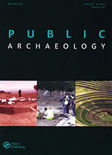
Public Archaeology
Advancing Public Dialogue Through Archaeological ResearchPublic Archaeology is a leading journal in the field of archaeology, published by Routledge Journals, Taylor & Francis Ltd in the United Kingdom. Established in 2004, this journal focuses on the interaction between archaeology and the public, providing a platform for discussions that bridge academic research and community engagement. With an impressive impact factor and ranked in the Q2 quartile for both Arts and Humanities and Social Sciences archaeology categories, it holds a prominent position as one of the top journals in its field, reflecting the high caliber of its published work. Researchers, professionals, and students alike will find valuable insights through its comprehensive articles and case studies that explore contemporary issues within archaeology and the implications of these on society. Despite not being openly accessible, the journal has established itself as an essential resource for innovative research and dialogue, making it an invaluable asset for anyone interested in the dynamic field of public archaeology.

Lanx-Journal of the Scuola di Specializzazione in Archeologia of the University of Milan
Fostering interdisciplinary dialogue in archaeology.Lanx-Journal of the Scuola di Specializzazione in Archeologia of the University of Milan, published by Milano University Press, is a distinguished platform dedicated to the field of archaeology. Committed to advancing archaeological research and scholarship, this Open Access journal has been available to the global academic community since 2008, facilitating easy dissemination of innovative ideas and findings. With a strong emphasis on promoting interdisciplinary dialogue, the journal covers a wide range of topics from classical archaeology to contemporary practices, making it an invaluable resource for researchers, professionals, and students in the field. Situated in the historic city of Milan, it aims to contribute to the preservation and understanding of cultural heritage through rigorous academic inquiry and collaboration.

Bulgarsko e-Spisanie za Arkheologiya-Bulgarian e-Journal of Archaeology
Connecting scholars to the past, present, and future of archaeology.Bulgarsko e-Spisanie za Arkheologiya - Bulgarian e-Journal of Archaeology is a prominent open-access journal published by the ASSOC BULGARIAN ARCHAEOLOGISTS since 2011, serving as a vital platform for the dissemination of archaeological research and findings in Bulgaria and beyond. With the ISSN 1314-5088, this journal is dedicated to advancing knowledge in the field of archaeology, facilitating the sharing of innovative studies, fieldwork results, and theoretical discussions. It is particularly significant for researchers, professionals, and students who are interested in the archaeological heritage of Bulgaria, providing an accessible venue for high-quality scholarly contributions. The journal's commitment to open access ensures that its rich repository of knowledge is available to a global audience, enhancing collaboration and fostering new discoveries within the discipline.